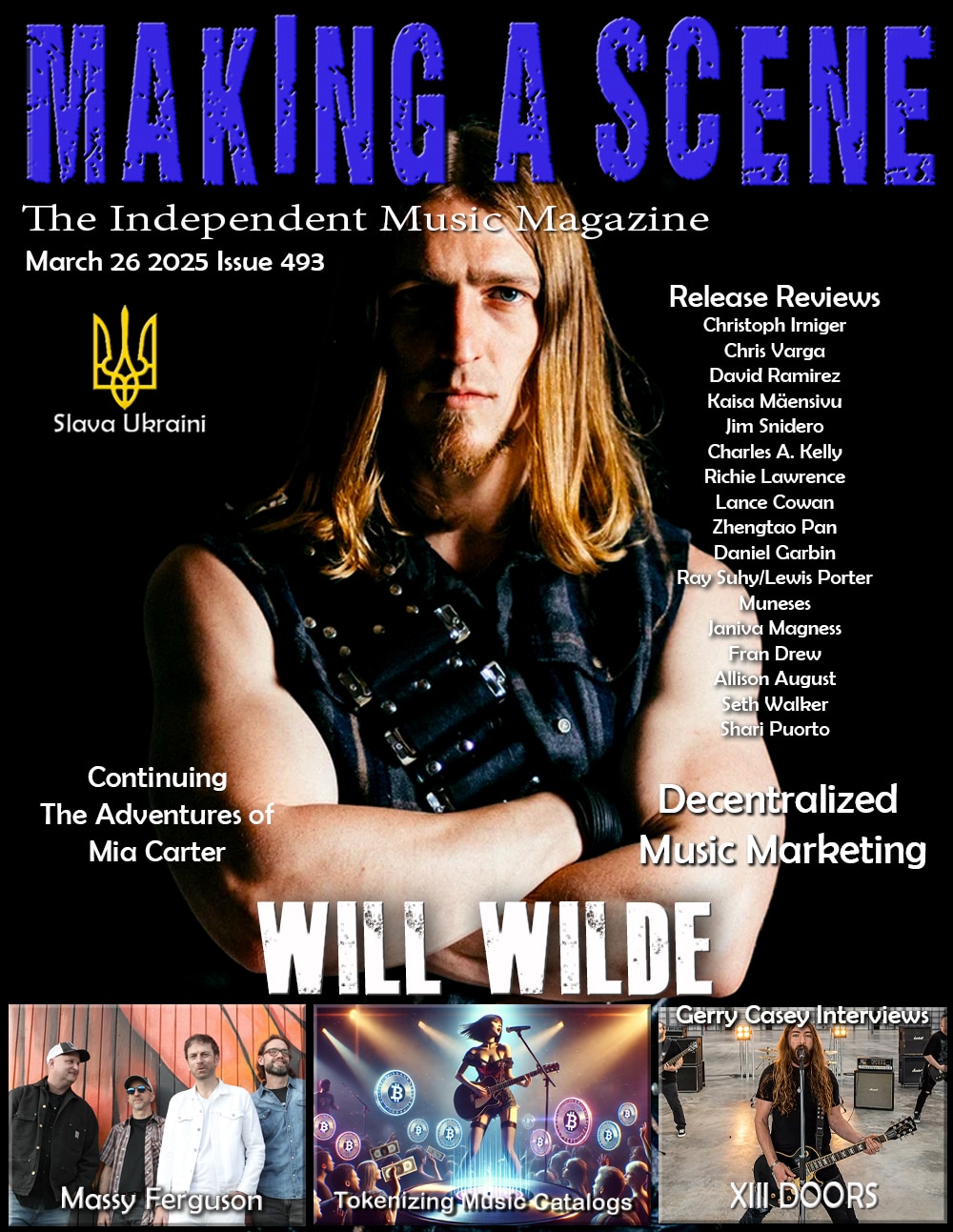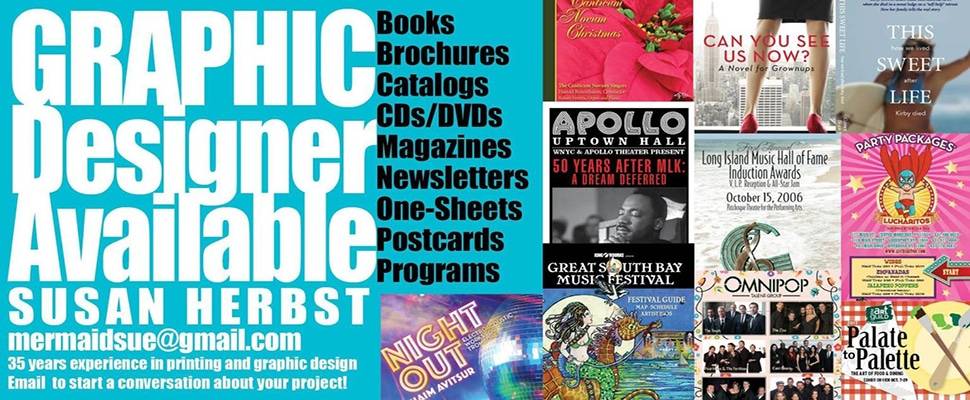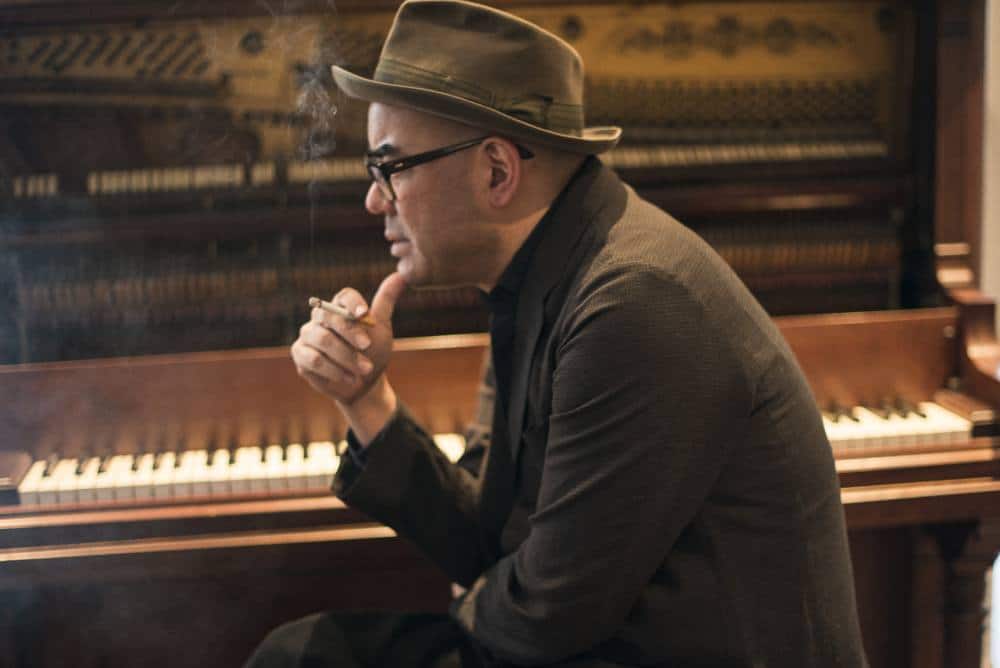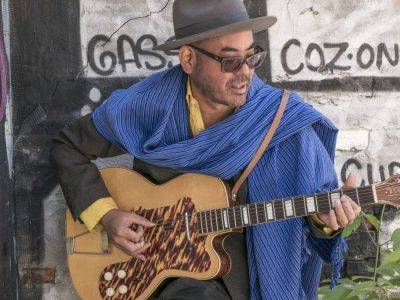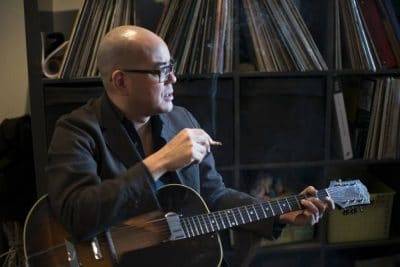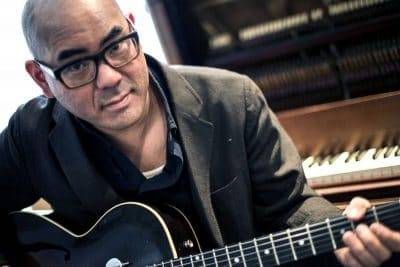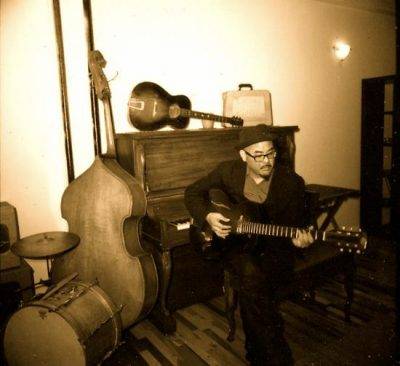An Interview with Sugar Brown
Making a Scene Presents an Interview with Indie Blues Artist Sugar Brown!
It’s a blues world, and Sugar Brown is living in it and “calling all blues” with real grace and style. The Toronto-based vocalist, songwriter and multi-instrumentalist has found his full creative voice on It’s A Blues World (Calling All Blues!), his third album, released in March 2018.
Following on from his 2014 debut Sugar Brown’s Sad Day and 2015’s acclaimed Poor Lazarus, the new record mines the various strata of the blues genre, digging deep and unearthing dazzling new gems. Brown possesses an encyclopedic knowledge of the form, but his songs are passionate, singular, and soulful, constantly resisting generic, mainstream formulations.
He explains his free-wheeling and idiocyncratic style this way: “Each song here is a blues world. They go from country to urban, from the ’30s to ’70s, but they are little worlds within the blues. “My last name, Kawashima, means river-island in Japanese. You can think of each song as an island in a river. You can flow down the river, stopping and listening to one, then moving onto the next.” The voyage is a richly compelling and entertaining one.
It’s A Blues World was recorded at Toronto studio Marquee Sound, with engineer Braden Sauder. Situated in an old movie theatre, the studio focuses on analog recording, Sugar Brown’s preferred form. “We recorded on two tracks, to quarter inch tape,” he explains. “I brought in one piece of recording gear, a 1936 Collins mike pre-amp, and plugged in my vocal microphone through that.” “By using the technologies of older recording, I want to give the listener a different sonic listening experience than what we’ve come to blindly accept in digital recording. That is part of the experience of a Sugar Brown album.”
It’s A Blues World has a rich, warm and intimate sound that is the perfect setting for Brown’s original compositions. The mastering work of Grammy-winner Peter J. Moore (Cowboy Junkies, Bob Dylan’s Basement Tapes) is the icing on the cake of the recording.
Joining Brown in the studio were such elite players as Michelle Josef (drums), Russ Boswell (bass), Nichol Robertson (guitar), Julian Fauth (piano), and Julia Narveson (horns and fiddle).
One special guest was US guitar ace Rockin’ Johnny Burgin, a close comrade of Sugar Brown on the Chicago scene in the ’90s. “Johnny was largely responsible for getting me to play blues guitar,” Brown recalls. “In college, I was in his band, Rockin’ Johnny and The Headhunters, and he helped me get into Taildragger’s band, the La-Z Boys, where I blowed harp.” “Having Johnny on the new record helped make my connection to the West Side of Chicago blues explicit. As a seasoned recording artist, he was also very helpful in the studio in keeping the process going.”
All the tunes on It’s A Blues World are Sugar Brown originals but he is quick to cite influences upon the material on the new album. For instance, he explains that “Hard To Love” was “inspired by the acoustic playing of Floyd Council and also of George McCoy, who was the husband of Memphis Minnie. I dig that open tuning and fingerpicking style and wanted it to be part of the album.”
Then there’s “Lousy Dime,” another highlight of an album devoid of lowlights. “That was inspired by Tom Waits. He has a song called ‘Everybody’s Talking At The Same Time,’ and I turned it into ‘everybody’s scrambling for the same lousy dime,’” says Brown. There’s a Waits-ian feel to the vocal here, while the fluent banjo work of Nichol Robertson adds a rootsy country element.
Brown cites “Hummingbird” as “one of the songs I’m proudest of. To me, it’s a combination of John Lee Hooker and Frankie Lee Sims.” The upbeat track has a great groove and features vibrant baritone sax from Julia Narveson.
There’s also an irresistible slow and dirty groove to the title cut, one incorporating harp, horns and piano and a powerfully passionate vocal performance. Brown terms “It’s A Blues World” an homage to Little Mack Simmons, and notes that the inspiration for the lyrics came from “thinking about the current degeneration of American society in the era of Trump.
The blues of Lonnie Johnson and Big Bill Broonzy were inspirations for “Tide Blues,” a sparse and rustic tune that Brown explains as conveying “a sense of plaintiveness of being in love.”
“Love Me Twice” is loosely based on Bob Dylan’s “It’s Not Too Late,” with Sugar arranging funky parts for Farfisa organ, combined with a “Chicago West Side sound on the b-part.”
Elsewhere, Sugar Brown is equally at home on old-style country blues tunes (“Brothers,” “Hard To Love”), boogie (“Clock Struck Noon”), and jump blues (“Dew On The Grass”), and a little rock-n-roll with “Those things you said to me”.
“I try to have a diversity of songs with different feelings, different beats, different worlds.” he explains, and that mandate is certainly fulfilled on It’s A Blues World.
Recognition of Sugar Brown as a fresh, authentic and original voice in North American blues came in 2013 with his victory in the prestigious Toronto Blues Society Talent Search. In early 2017, he reached the finals of The International Blues Challenge in Memphis, while his performances at such major Canadian music festivals as the Montreal International Jazz Festival, Mariposa Folk Festival, Salmon Arm Roots and Blues Festival, Edmonton Blues Festival, and Kitchener Blues Festival have been enthusiastically received.
His life story is certainly not an orthodox one for a blues artist. Sugar Brown was born Ken Kawashima, to a Japanese father and Korean mother who both immigrated to the United States in the mid-1960s. He was raised in Bowling Green, Ohio, then moved to Chicago to pursue his studies.
He soon immersed himself in that city’s rich blues culture and heritage, and his enduring passion for the form was born. Chicago is where Brown cut his teeth as a blues musician, working extensively with such local heroes as Taildragger (the man who gave Kawashima his nickname), as well as with Willie “Big Eyes” Smith, and Rockin’ Johnny Burgin.
Since completing his Ph.D. in history from New York University in 2002, Sugar Brown has been living in Toronto, where he teaches as Associate Professor of East Asian Studies at the University of Toronto.
Upon relocating to Toronto, Brown took a break from performing music, but the siren call of the blues proved impossible to resist.
Sugar Brown is now offering us an open-hearted welcome to his blues world. It would be foolish to resist
[amazon_link asins=’B07BHYTYHL,B07BHZBVDR’ template=’ProductCarousel’ store=’maasc-20′ marketplace=’US’ link_id=’b038ce33-af74-11e8-a677-5b15d4491097′]
Discover more from Making A Scene!
Subscribe to get the latest posts sent to your email.





































